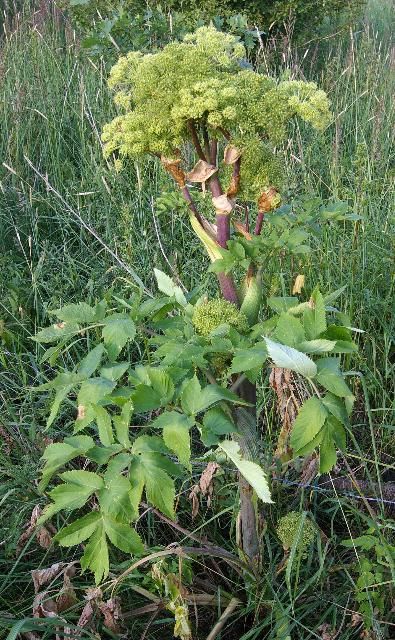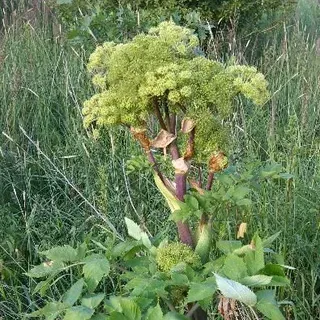Angelica—Angelica archangelica L.1
Angelica is a European perennial plant sometimes grown in this country as a culinary herb. In addition to garden angelica, other common names are archangel, masterwort, and ground ash.
This member of the parsley family, related to carrots, grows in fields and damp places from Labrador to Delaware and west to Minnesota. Syria is believed to be its point of origin.
Many species have been used since early times when it was regarded most highly for its medicinal and magical properties, especially in counteracting poison and plague and warding off evil. Its name probably derives from these properties. One species (A. sylvestris) is called Holy Ghost. Common angelica is the Archangelica species, and American angelica is atropurpurea.
French angelica has a powerful, peculiar, pleasant, soft, and musky odor, a sweet taste, and pungent after-taste. The odd flavor and odor arise from a volatile oil contained in all parts of the plant.

Credit: Christian Fischer, CC BY-SA 3.0
Use
The fresh stems and leafstalks are used as garnish and for making candied angelica. The seeds and the oil distilled from them are used in flavoring foods, and the aromatic roots are used in medicine. People in the north, particularly the Lapps, use it as a foodstuff, condiment, or medicine, and even chew it like tobacco. The Norwegians use the crushed roots in their bread. Icelanders eat both the roots and stems raw with butter. In Finland, the stems are cooked with flavoring provided by the leaves. Inuit peoples in North America use the stalks like celery.
Description
The robustly growing angelica plant is 5–6 feet tall and resembles wild carrot, although the leaves are much broader. It has large petioles and a purple-colored root. Leaves are compound, and flowers are borne in umbels like the carrot. It is a perennial plant that flowers every 2 years.
Culture
The plant thrives best in a moderately cool climate in semishade; therefore, it is unlikely to grow well in Florida. The plant is most readily propagated from division of old roots, which can be set either in the fall or spring about 18 inches apart in 3-foot rows. If seeds can be obtained, start seedlings in a seed bed, then transplant to the garden.
To increase root development, the plants are often transplanted a second time at the end of the first year's growth. For the same reason, the tops are often cut back to prevent the formation of seed. Several herb supply catalogs list angelica starting material for sale.
Harvesting
Roots, stems, and seeds are harvested and used as needed, with some parts being ready 3–4 months after planting. The roots of the first year or second year are dug, washed, dried, and stored in tight containers to preserve the aroma.



